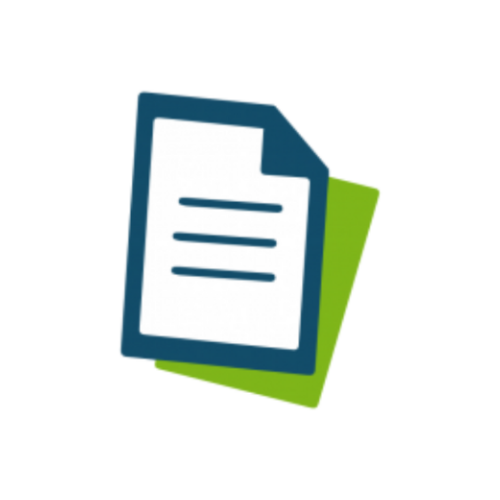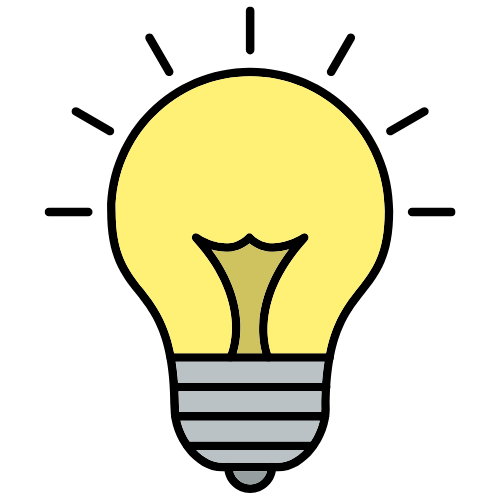Blog > Treatment Strategies > Top Depression Assessment Tools: Compare PHQ‑9, BDI, DASS‑21 & More
Best Depression Assessment Tools: A Clinician's Guide to Screening and Monitoring
Accurate identification and tracking of depressive symptoms are essential in behavioral health care. Depression assessment tools give clinicians a structured, evidence-based way to screen for depression, evaluate severity, and monitor change over time. These tools complement the clinical interview, providing standardized data that supports treatment planning, documentation, compliance, and quality reporting. This guide reviews the most widely used depression assessment tools, explores their strengths and limitations, and explains how to choose the right tool for your setting.

Last Updated: August 18, 2025


What You'll Learn
- How to select the right depression assessment tool for your clients
- Pros, cons, and scoring methods for top tools like PHQ-9 and BDI-II
- Best practices for integrating assessments into your clinical workflow
What is a Depression Assessment Tool?
Depression assessment tools are structured questionnaires or rating scales designed to measure depressive symptoms consistently across clients and sessions. They help clinicians identify when depression may be present, quantify its severity, and follow the course of symptoms over time. The results can be used to guide treatment planning, track outcomes, and provide standardized documentation for payers and compliance.
Some instruments are self-report questionnaires (e.g., PHQ-9, Zung, GDS) that empower clients to reflect on their symptoms, while others are clinician-administered scales (e.g., HAM-D, MADRS, QIDS-C) that provide more structured and nuanced evaluations. While no tool replaces the clinical interview, validated instruments increase diagnostic accuracy and allow for consistency in measurement across sessions and providers.
Clinical Context and Best Use Cases
Choosing the right tool depends on the clinical context. For initial screenings, short tools like the PHQ‑9 and Zung are quick to administer and easy to score. For severity profiling, the BDI-II, HAM-D, or MADRS provide deeper insights into cognitive, behavioral, and somatic domains. When clinicians need to monitor progress, tools such as PHQ‑9, QIDS-C, or DASS‑21 are helpful for showing changes over time. Special populations also require tailored tools—such as the GDS for older adults or the CDI for children. In addition, organizations often use standardized tools for program evaluation and quality reporting, demonstrating measurable outcomes of care.
How Depression Assessment Tools Fit Into Clinical Workflow
Assessment tools fit naturally into multiple stages of care. At intake, they provide a baseline score that can be revisited later. In cases of elevated scores or suicidal ideation, they support risk triage and safety planning. During treatment planning, results translate into measurable goals that can be tied to evidence-based interventions. With progress monitoring, scores can be re-administered every 4–6 weeks to evaluate whether treatment is effective or requires adjustment. These scores can also support care coordination, providing consistent data across providers. Finally, proper documentation and billing ensures compliance with payer requirements and supports measurement-based care.


Why Use Depression Assessment Tools?
-
Consistency and Reliability: These tools provide common metrics that can be consistently used over time and across different practitioners.
-
Clinical Validity: Many are validated against DSM criteria and peer-reviewed studies to ensure accuracy in detecting depression.
-
Treatment Monitoring: Repeated assessments make it easier to track symptom changes and clinical progress.
-
Documentation & Compliance: Quantifiable scores support charting, justify clinical decisions, and support billing requirements like CPT code 96127.
Signs and Symptoms of Depression Across Age Groups
Depression does not look the same at every age. Children, teens, adults, and seniors may display different symptoms, and recognizing these variations helps clinicians choose the right assessment tool and interpret results accurately.
| Age Group | Common Signs and Symptoms |
|---|---|
| Children | Irritability, clinginess, school refusal, unexplained aches and pains, withdrawal from play, changes in sleep or appetite |
| Teenagers | Sadness, irritability, poor school performance, social withdrawal, sensitivity to criticism, risk-taking behavior, substance use |
| Adults | Persistent sadness, fatigue, loss of interest in activities, changes in appetite or sleep, difficulty concentrating, feelings of guilt or worthlessness, suicidal thoughts |
| Seniors | Memory complaints, physical aches, withdrawal, loss of interest, neglect of personal care, confusion with dementia, hopelessness |
Descriptions of Key Depression Assessment Tools
Below are brief overviews of the most frequently used depression assessment tools, including when they are most effective and why they matter in practice.
PHQ-9 (Patient Health Questionnaire-9)
Widely used in primary care and behavioral health, the PHQ-9 is free, quick to complete, and directly maps to DSM-5 criteria for major depression. While efficient, it provides limited nuance for complex or atypical presentations.
Beck Depression Inventory-II (BDI-II)
The BDI-II is a comprehensive 21-item tool suitable for ages 13+, offering detailed emotional, cognitive, and physical symptom profiling. Requires licensing but provides robust severity insights.
DASS-21 (Depression Anxiety Stress Scales-21)
The DASS-21 covers depression, anxiety, and stress through 21 items, making it valuable when co-occurring symptoms are common.
Geriatric Depression Scale (GDS)
The GDS is a yes/no screening tool tailored for older adults that minimizes confounding physical health factors.
Montgomery-Asberg Depression Rating Scale (MADRS)
A clinician-rated tool designed to be sensitive to symptom changes, the MADRS is frequently used in research and medication management.
Hamilton Depression Rating Scale (HAM-D)
One of the oldest clinician-administered scales, the HAM-D is extensively validated and still widely used in clinical trials.
Zung Self-Rating Depression Scale
The Zung SDS is a 20-item self-report measure that is quick, easy to administer, and available in the public domain.
Quick Inventory of Depressive Symptomatology (QIDS-C)
Available in both clinician-rated and self-report versions, QIDS-C assesses the nine DSM symptom domains of major depression.
Other Noteworthy Tools
In addition to the most common instruments, clinicians may also consider tools like the CES-D (used in community and epidemiological studies), the CDI (for children ages 7–17), the KADS (for adolescent screening), and the RADS (which measures depressive symptoms in adolescents). These tools are particularly useful for research settings or specialized populations.
| Tool | Format & Length | Primary Focus | Age Range | Strengths | Limitations |
|---|---|---|---|---|---|
| PHQ-9 | 9 items, <5 min | Depression screening & monitoring | Adults | Free, DSM-aligned, widely validated | Limited depth for complex cases |
| BDI-II | 21 items, ~10 min | Symptom severity & tracking | Ages 13+ | Comprehensive symptom coverage | Licensing required, longer to complete |
| DASS-21 | 21 items, 5–10 min | Depression, anxiety, stress | Adults | Covers multiple mood domains | Less specific to depression |
| GDS | 15 or 30 items, <10 min | Screening in older adults | Seniors | Avoids somatic bias | May miss atypical symptoms |
| MADRS | 10 items, ~15 min | Treatment response | Adults | Sensitive to change | Requires trained clinician |
| HAM-D | 17–21 items, ~15–20 min | Clinical severity & research | Adults | Gold standard in research | Complex scoring, interviewer bias |
| Zung | 20 items, 5–10 min | General screening | Adults | Simple, public domain | Limited specificity |
| QIDS-C | 16 items, 5–7 min | DSM-based domains | Adults | Dual self/clinician format | Less commonly used than PHQ-9 |
Choosing the Right Tool
With so many depression assessment tools available, how do you decide which one to use? The choice depends on the population you serve, the purpose of the assessment, and the setting of care. For example, a short tool like the PHQ-9 may be ideal for routine primary care visits, while the HAM-D or MADRS may be more appropriate in psychiatric research or medication management. Always consider literacy, language, and cultural relevance, as well as whether the tool is endorsed by CMS, MIPS, or USPSTF for compliance and reporting.
Best Practices for Use
To maximize the value of depression assessment tools, follow these best practices. Use validated instruments on a routine schedule, pair them with clinical interviews for richer context, and re-administer them at treatment milestones to track outcomes. Documenting the tool, score, and interpretation in your EHR not only supports clinical insight but also ensures compliance. Sharing results with clients can also strengthen engagement and therapeutic alliance.
Frequently Asked Questions
Streamline Depression Screening with ICANotes
ICANotes includes built-in templates and scoring calculators for widely used depression assessment tools like the PHQ-9, DASS-21, GDS, HAM-D, QIDS-C and Zung. Our behavioral health EHR makes it easy to document, track, and report results for compliance and better care delivery.
Request a demo to see how ICANotes can simplify your depression screening workflow, or sign up for a 30-day free trial, no credit card required.
Start Your 30-Day Free Trial
Experience the most intuitive, clinically robust EHR designed for behavioral health professionals, built to streamline documentation, improve compliance, and enhance patient care.
- Complete Notes in Minutes - Purpose-built for behavioral health charting
- Always Audit-Ready – Structured documentation that meets payer requirements
- Keep Your Schedule Full – Automated reminders reduce costly no-shows
- Engage Clients Seamlessly – Secure portal for forms, messages, and payments
- HIPAA-Compliant Telehealth built into your workflow
Complete Notes in Minutes – Purpose-built for behavioral health charting
Always Audit-Ready – Structured documentation that meets payer requirements
Keep Your Schedule Full – Automated reminders reduce costly no-shows
Engage Clients Seamlessly – Secure portal for forms, messages, and payments
HIPAA-Compliant Telehealth built into your workflow
Related Posts
Dr. October Boyles is a behavioral health expert and clinical leader with extensive expertise in nursing, compliance, and healthcare operations. With a Doctor of Nursing Practice (DNP) and advanced degrees in nursing, she specializes in evidence-based practices, EHR optimization, and improving outcomes in behavioral health settings. Dr. Boyles is passionate about empowering clinicians with the tools and strategies needed to deliver high-quality, patient-centered care.








